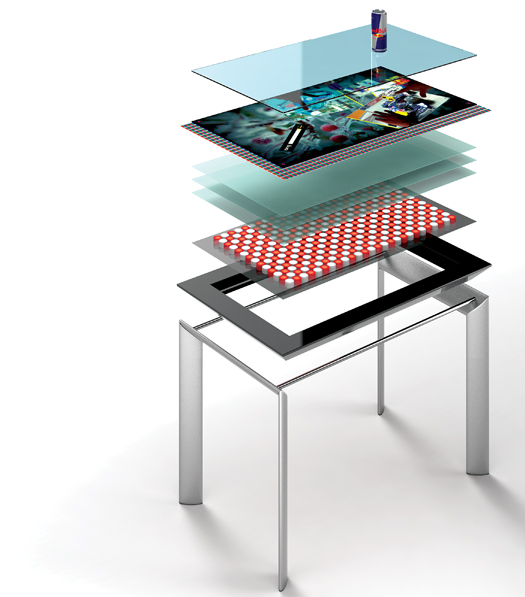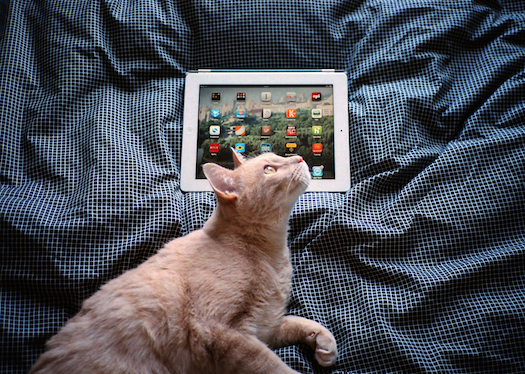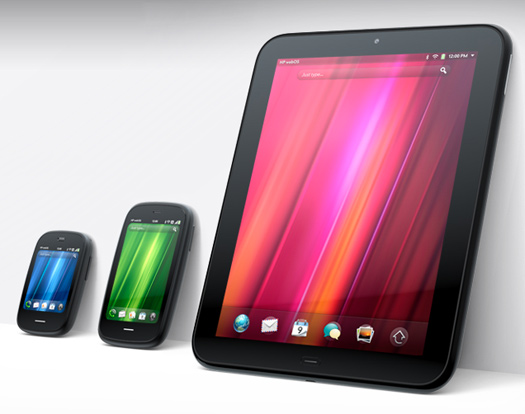

We may earn revenue from the products available on this page and participate in affiliate programs. Learn more ›
Soon, putting a beer on the bar could launch a readout of the brewery’s history, assorted tasting notes, and suggestions for the best barbecue to accompany your pint. In the Samsung SUR40, Microsoft has introduced a svelte touchscreen table that doesn’t just react to pokes and prods; it sees and identifies what’s on it. This ability allows developers to make apps that cater to products or text cues. Here’s how it works:
How It Works
Protective Glass
Designed for public places such as stores and bars, the SUR40 is topped with a 40-inch sheet of Corning’s scratch- and shatter-resistant Gorilla Glass, which is compressed to be nearly 10 times as strong as other glass.
LCD Panel
Below the glass sheet is an LED-backlit LCD panel, at the same resolution and aspect ratio as a 1080p HDTV (1,920 by 1,080 pixels and 16:9).
Infrared Array
Each pixel has an infrared sensor that recognizes when its light bounces off an object. Common capacitive touchscreens sense any breaks in an electric field; in the SUR40, every pixel reports for itself. The result is an eight-bit image, from which the table’s computer can pick out shapes and large text, such as product numbers, as long as these identifying marks are facedown.
PC Housing
A 2.9-gigahertz processor translates the sensors’ image and sends related commands to the screen. Plop a Red Bull on the table, and the array sees its narrow shape; the processors can then identify the can and play related videos on the LCD.







